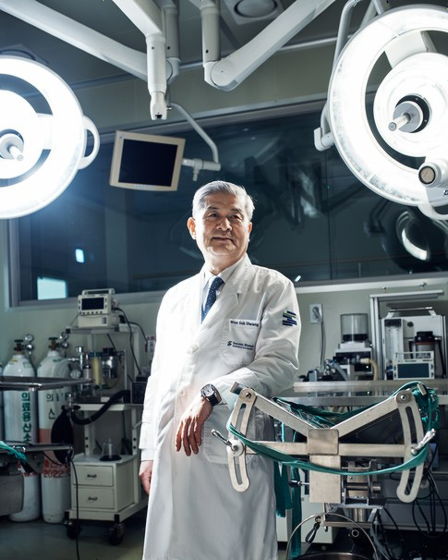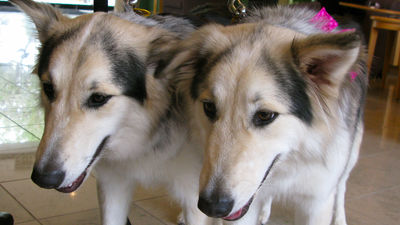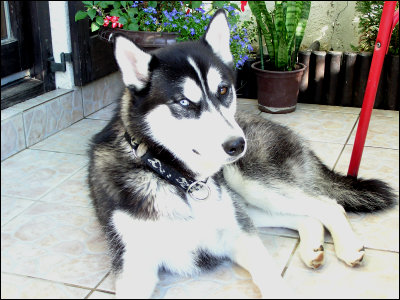Cloning dog cloning 'dead pet' clone dog business cutting edge

by İrem Türkkan
In Korea's laboratory, several doctors are cloning "one dead pet" for wealthy people and celebrities. About the latest information on "cloned dog" which such clone business is flourishing, Vanity Fair of overseas media is summarized with an interview with surgeon Fan · Woo Suk who is the center of business.
Inside the Very Big, Very Controversial Business of Dog Cloning | Vanity Fair
https://www.vanityfair.com/style/2018/08/dog-cloning-animal-sooam-hwang
A surgeon team in Seoul, Korea seems to be doing like an entertainer like a box officer who cuts the stomach of a pregnant dog and takes out a baby while being watched by students in a glassed operation room. And what is surprising is that the baby dog taken out from his belly is a clone. Mr. Hwang Woo Seok who is in charge of operations is a man known for having brought a cloned dog to the world for the first time and he is the director of a company that makes cloned dogs like business at Shintao Biotechnology Institute as a business .
A cloned dog taken out by Mr. Usoku from his belly of the mother

Dolly , the mammalian somatic cell cloned sheep, was born for the first time in the world, and it was already over 20 years ago that I surprised the world. At the time, media said that creating a genetic replica of a living thing is to jump into implicit fear, but now more amazing technologies such as artificial intelligence , genome editing , chimera, etc. have appeared, clones The fear of is becoming no longer small.
As I reveal that overseas celebrity Barbra Streisand has two cloned dogs of my dog, Samantha who died in March 2017, the sense of resistance to the clone is getting diminished It is clear. In addition, Mr. Streisand created a cloned dog based on cells collected from the mouth and stomach of the dog Samantha with a pet clone company in the state of Texas, USA, ViaGen Pets.
However, after revealing that Mr. Streisand keeps a cloned dog, protest voices came from animal protection groups and others. Still, Mr. Streisand seems not to be in the mind, "I have been losing my love Samantha who has been walking together for 14 years, so I fell terribly down and I wanted to be with her in some form ... Samantha It was an easy decision for me once I knew that she could live with her altogether if there was a part of the DNA of her "and said that it was easy to make a clone decision. In addition, it seems that the cost of creating a cloned dog is 50,000 dollars (about 5.5 million yen).
Barbra Streisand Cloned Her Dog. For $ 50,000, You Can Clone Yours. - The New York Times

Ethicists have long discussed the morality of cloned animals. Discussions are being made on clones from many viewpoints, such as whether there is a right to create copies of living things in humans, and whether they are really considering the pain caused by the cloning process. With existing cloning technology, more than 12 embryos are needed to produce "one healthy cloned dog". This is because the surrogate mother taking a clone has the risk that the risk of life will increase with the passage of time, and even if there are twelve embryos, most die because of miscarriage or the like. Nonetheless, cloned dogs that Mr. Usoku made for the first time in 2005 were born after transplanting more than 1000 embryos to over 100 surrogate mothers, and the technology for producing cloned dogs has made remarkable progress compared with those days It can be said that it is.
A lot of sacrifice is accompanied to produce one cloned dog, but at the Hideyoshi Biotechnology Institute we have produced over 1,000 cloned dogs in the past 10 years. In addition, at the Hideyoshi Biotechnology Institute, it is possible to clone quickly if DNA can be collected within 5 days after the death of a pet dog. Jeon Won Wan, a cloned dog researcher who works at the same laboratory, explains, "If the cells of the dead dog are not damaged, we can keep the cloned dog within 5 months." If you are making cloned dogs here, the cost is 100,000 dollars (about 11 million yen).

It is no doubt that Mr. Wusok is at the center of such a cloned dog business. Mr. Usok announced that he succeeded in creating human embryonic stem cells (ES cells) on the science of scientific journals while serving as a professor at Seoul National University in 2004. After that, in 2005 we have successfully created the world's first cloned dog / snappy. However, revealed that he was working injustice in the ES cell paper published in 2004, Mr. Usoku's fame will fall to the ground.
Still, in order to continue the research on the clone, Mr. Usok set up the Shuiwa Biotechnology Institute. Originally we were devoted to studies on pigs and cattle clones, but in 2007 we received one contact from Mr. John Spelling, the founding founder of Phoenix University, so that the direction of the whole company It will shift. Mr. Spelling had a pet dog, Micie, who had been battling for many years, but he said that the dog died a few years ago. Mr. Sperling considers "I want to meet Missy again" and consulted with Mr. Wusoku whether he could make cloned dogs. Mr. Usoku made a clone of Missy in 2009, and from that, he is said to be developing business of cloned dogs as a business.
In the course of trial and error over several years, the process of creating cloned dogs has been tweaked. In the preparation of cloned dogs, first a micropore is opened in a donor's egg using a high-performance microscope to remove nuclei containing DNA. Then remove the nucleus from the cells of the dog to be cloned (usually taken from the inside of the skin or cheek) and place the nucleus in the egg of the donor dog. We then fuse the resulting hybrid eggs with the cells and divide them into cells, and when they become embryos, transfer them into the uterus of the dog, the surrogate mother. After that the dogs as surrogacy mothers grow the cloned dogs in the body just as usual, and hopefully cloned dogs will be born about 60 days after transplanting the embryos.

by Charles Deluvio
When I asked Vanity Fair that I got an opportunity to interview Mr. Wusok, "I ask why many people want to clone a dog?" Mr. Wusok said, "The main reason is that the dog they love is family members It is like something and I'd like to continue that relationship for as long as possible. " Although cloned dogs often look similar to the original dogs, they are "accurate replicas" to the last, and do not have the memory of the original dog. Mr. Wusok expresses the cloned dog as "a twin born later".
As for the high cost of cloning, it explains "There is no effective way to mature a dog's oocyte in a test tube".
Furthermore, when asking about the ethical aspect, Mr. Wusoku said, "Animal cloning ethics and human cloning ethics have completely different values. Also at the Hidetoi Biotechnology Institute, human cloning is not done, but animal clones We believe that it will benefit us and help us contribute to society. "
Among the clones created by Hideyoshi Biotechnology Research Institute side, there is also the world's smallest Chihuahua clone known as " Miracle Milie ". The Hideyoshi Biotechnology Institute side has made 49 clones of Miracle Milly, which can be seen in the following movie.
World's smallest living dog, Miracle Milly, cloned 49 times in South Korea - YouTube
Mr. Wusok is claiming that cloning technology has many benefits. For example stem cell and embryo research will help to better understand animal's cell development process. Also, Mr. Usok has published dozens of scientific papers to effectively treat diseases such as Alzheimer's disease and diabetes, based on the findings obtained from cloning studies. In addition, at the Hideyoshi Biotechnology Institute, researches are being conducted to revive mammoths based on the living cells of mammoths that were discovered in Siberia a few years ago .

Xiwa Biotechnology Institute insists that their cloning technology is ethical, but at the same time I am eager to make it more efficient. Mr. Young Jae-in, who is in charge of biotechnology research at Shiroi's Biotechnology Institute, says, "The difficult thing about cloned dogs is getting fresh eggs." Mr. Jeon seems to hope to be able to grow eggs in the laboratory using stem cell technology instead of using time and expense to surgically extract eggs from other animals.
Since the creation of the world's first cloned dog / snuppie in 2005, the process of creating cloned dogs has dramatically improved. Hideyoshi Biotechnology Institute insists that hormones that induce ovulation will not be injected into surrogate mother dogs and he says that most embryos survive early in pregnancy without dying. More than 100 surrogate mother dogs and over 1000 embryos were necessary to create snappies, but if technologies as of 2018 were to be used, three surrogate mothers and dozens of embryos would make cloned dogs "We succeeded in minimizing stress on dogs throughout the study," Jeon says.
However, some researchers are criticizing the assertiveness of the Hideyoshi Biotechnology Institute side. Rudolf Janetz who is conducting research on stem cells and cloning technology at the Whitehead Institute in Boston said, "I do not think one of the surrogate mothers can produce one clone, clone technology is inefficient, many I will lose the clone of some of them, some will die at the stage of implantation and will get abnormal epigenetics . "
Critics also pointed out that hormone injections are often given to dogs as surrogacy mothers to accept embryos, and CheMyong Jay Ko, director of the germ-line stem cell laboratory at the University of Illinois at Urbana-Champaign "Although it is injected with the same hormone that is used for humans after in vitro fertilization, it will be done repeatedly over and over again for dogs, sometimes making it difficult to obtain effects."
In the beginning, scientists are not doing good research just to make clones in modern times. For example, even when cloning human beings, it is required to better treat diseases by improving genes and to improve them to have superior ability. George Church, a Harvard geneticist, commented, "Copying humans does not make much sense, it is meaningful to make improved versions, such as improving DNA to treat cancer." Just as the object of fear has shifted from "Jurassic park-like cloning technology that creates dinosaurs" to "blade-runner-like genomic editing technology creating replicants", business to create cloned dogs is accepted as modern It may be getting into.

by Patrick Hendry
Despite the prohibition by the government, there have been many attempts to create human clones. Indeed, Hank Greley of Stanford University commented, "Parents losing their babies and grieving will make millions of people providing human clones a billionaire." As celebrities who lost their dogs are all creating cloned dogs, if a human clone is legal, parents who lost their children will try to clone together, Greeley points out doing.
Related Posts:







